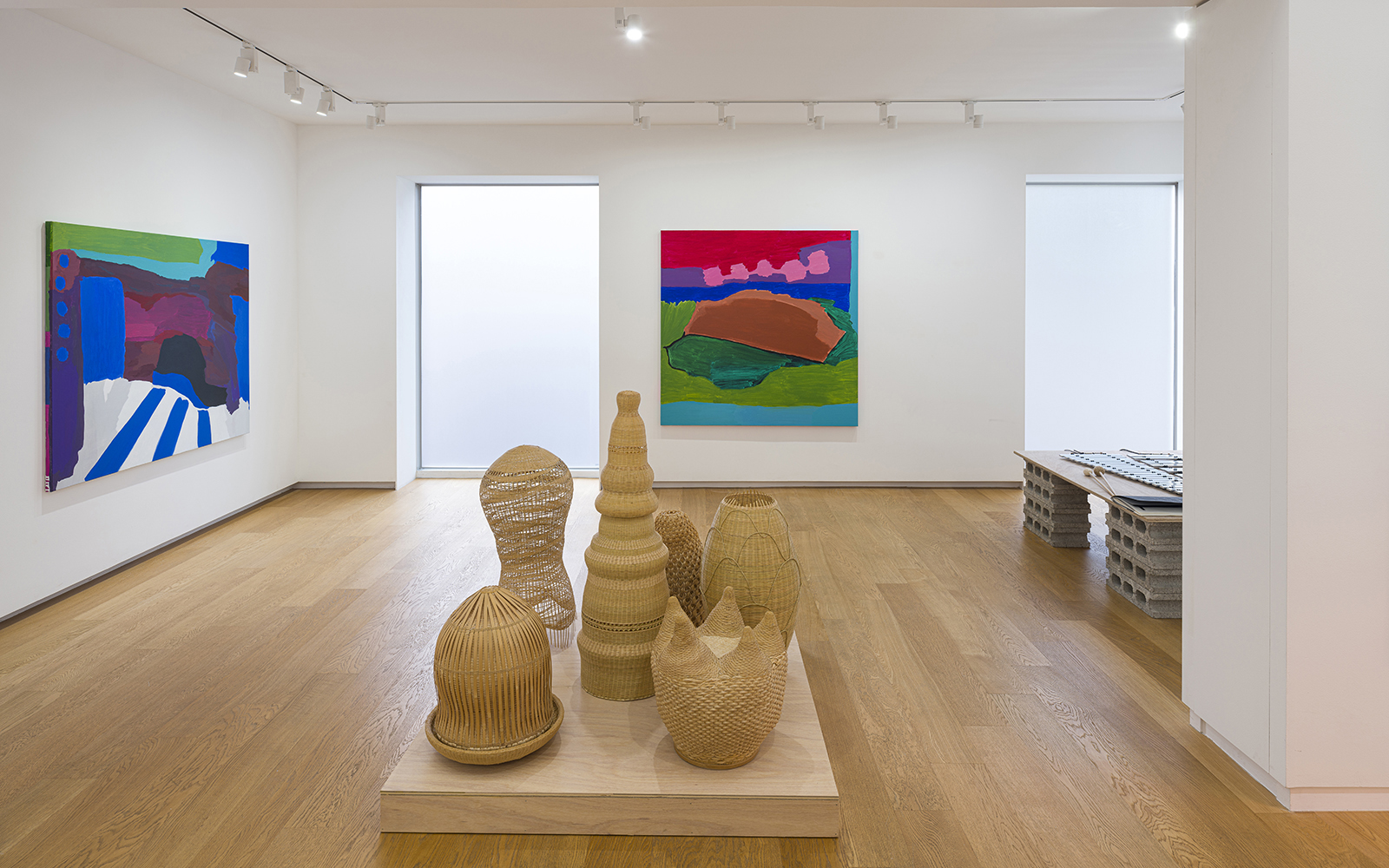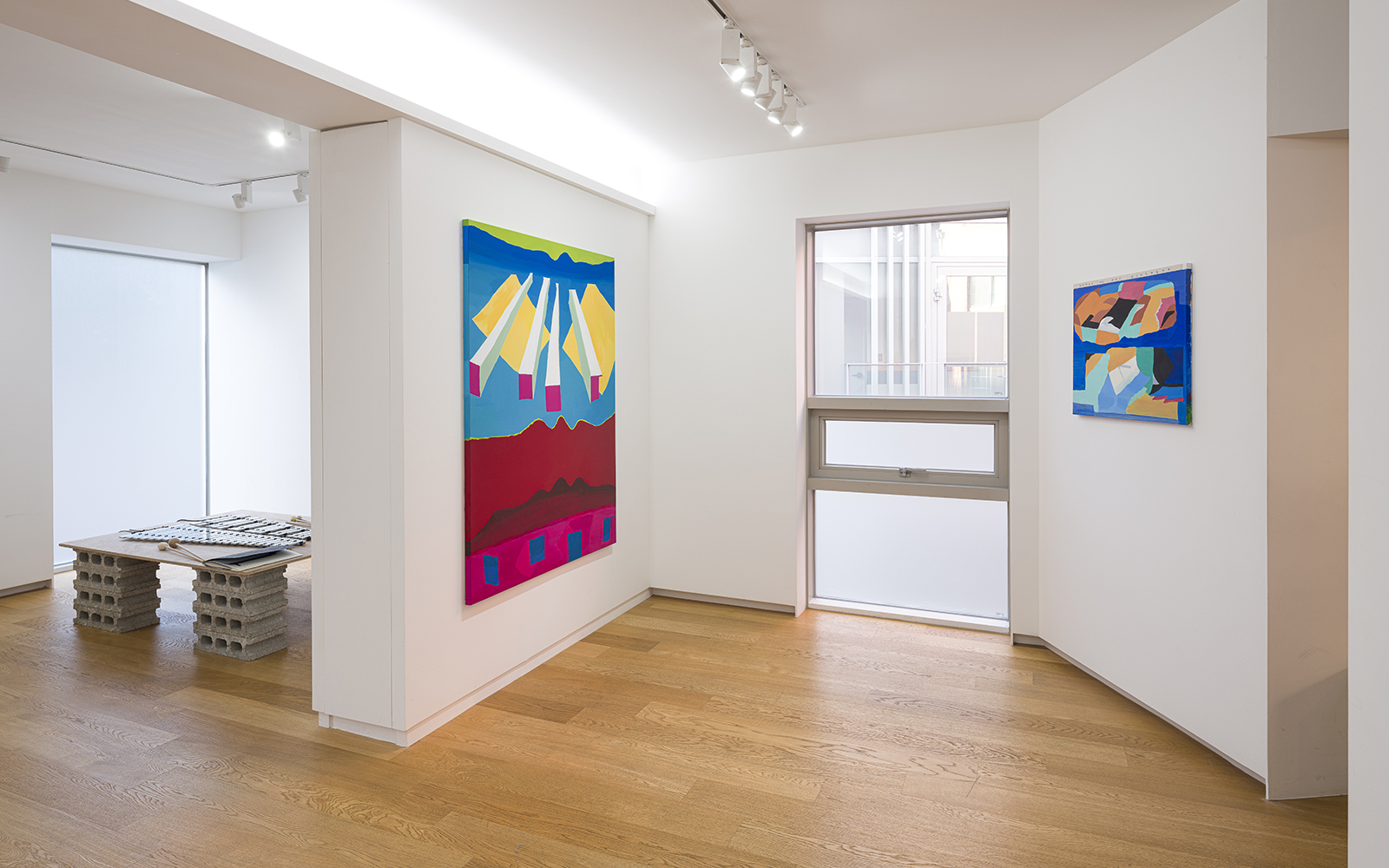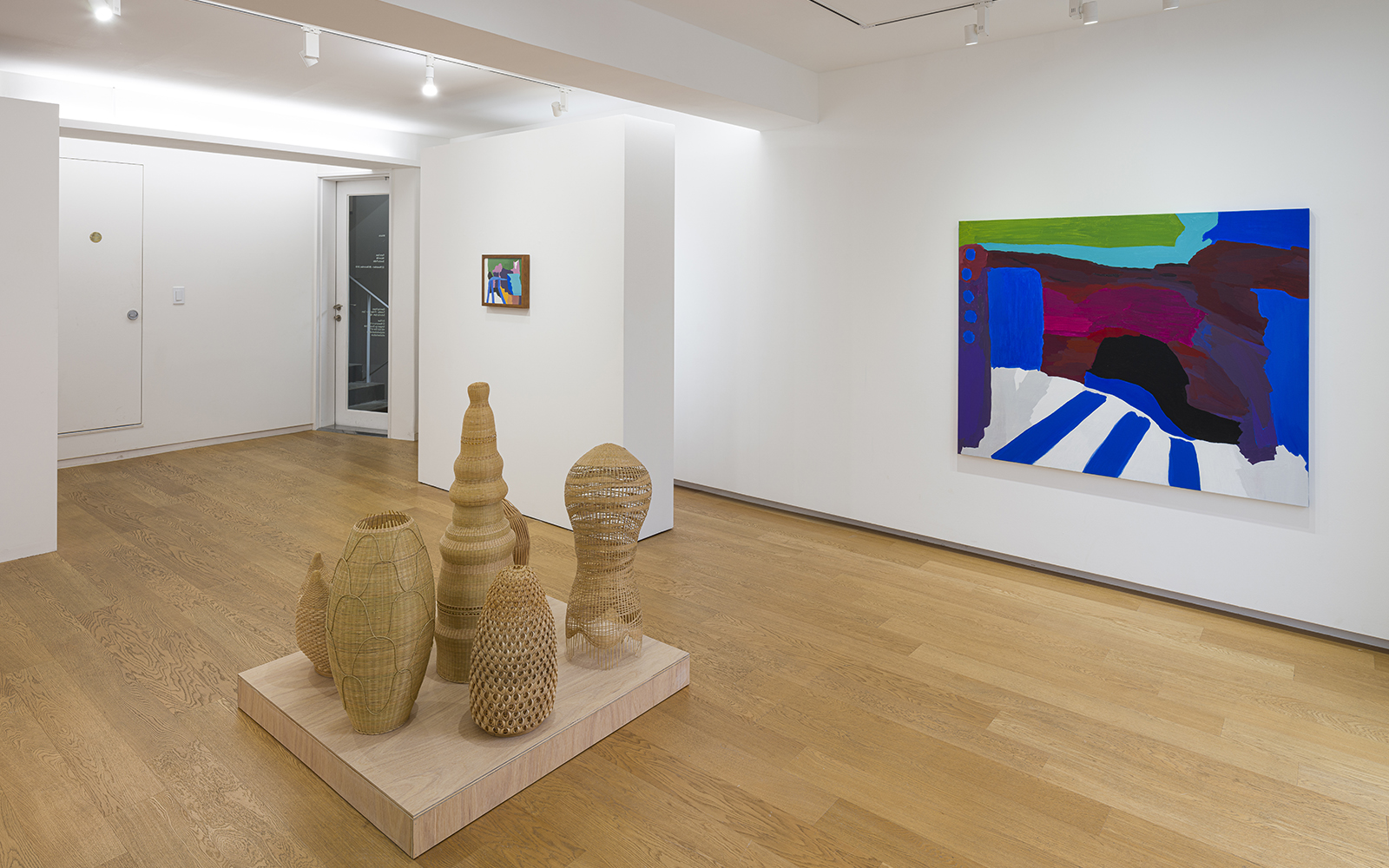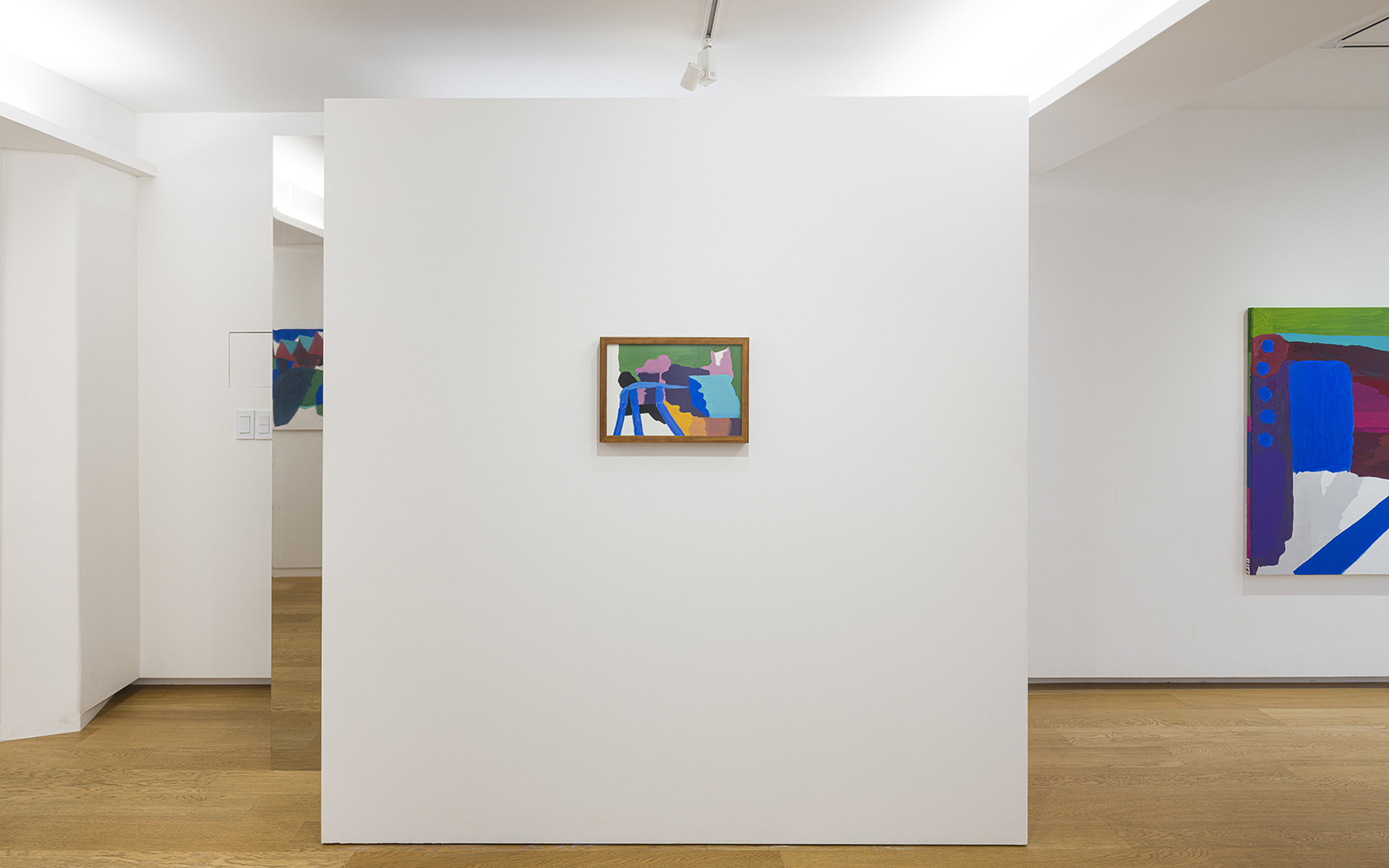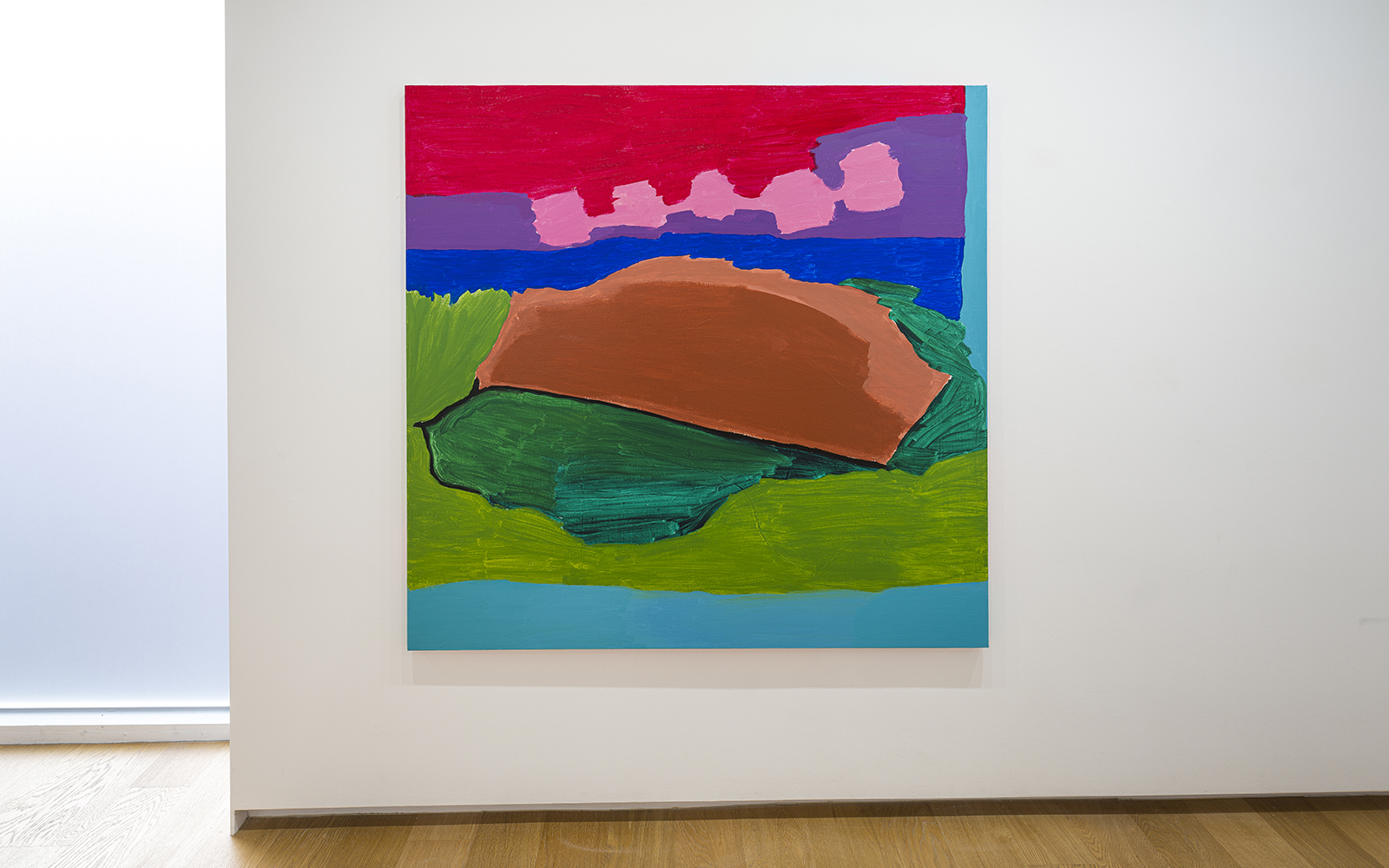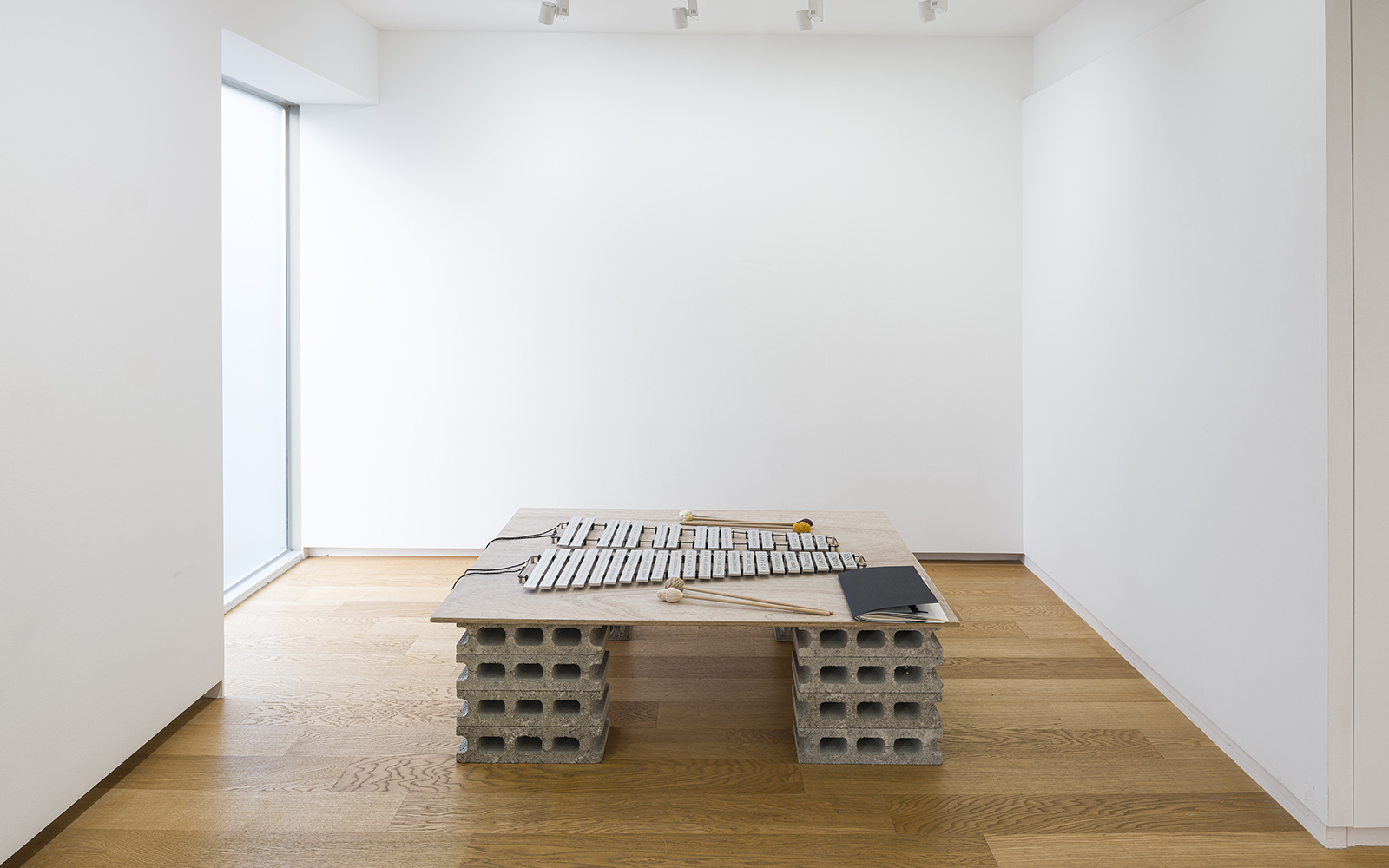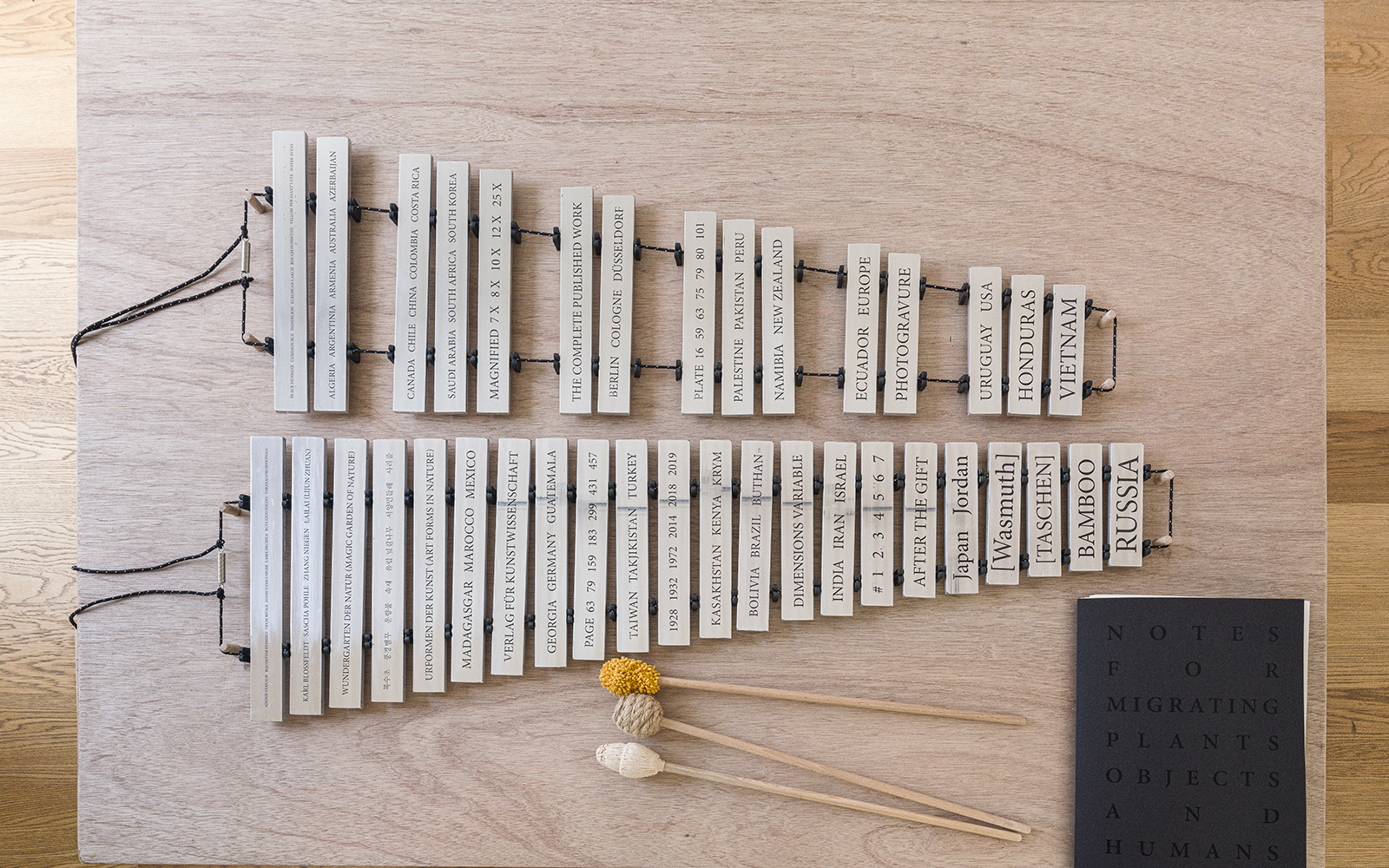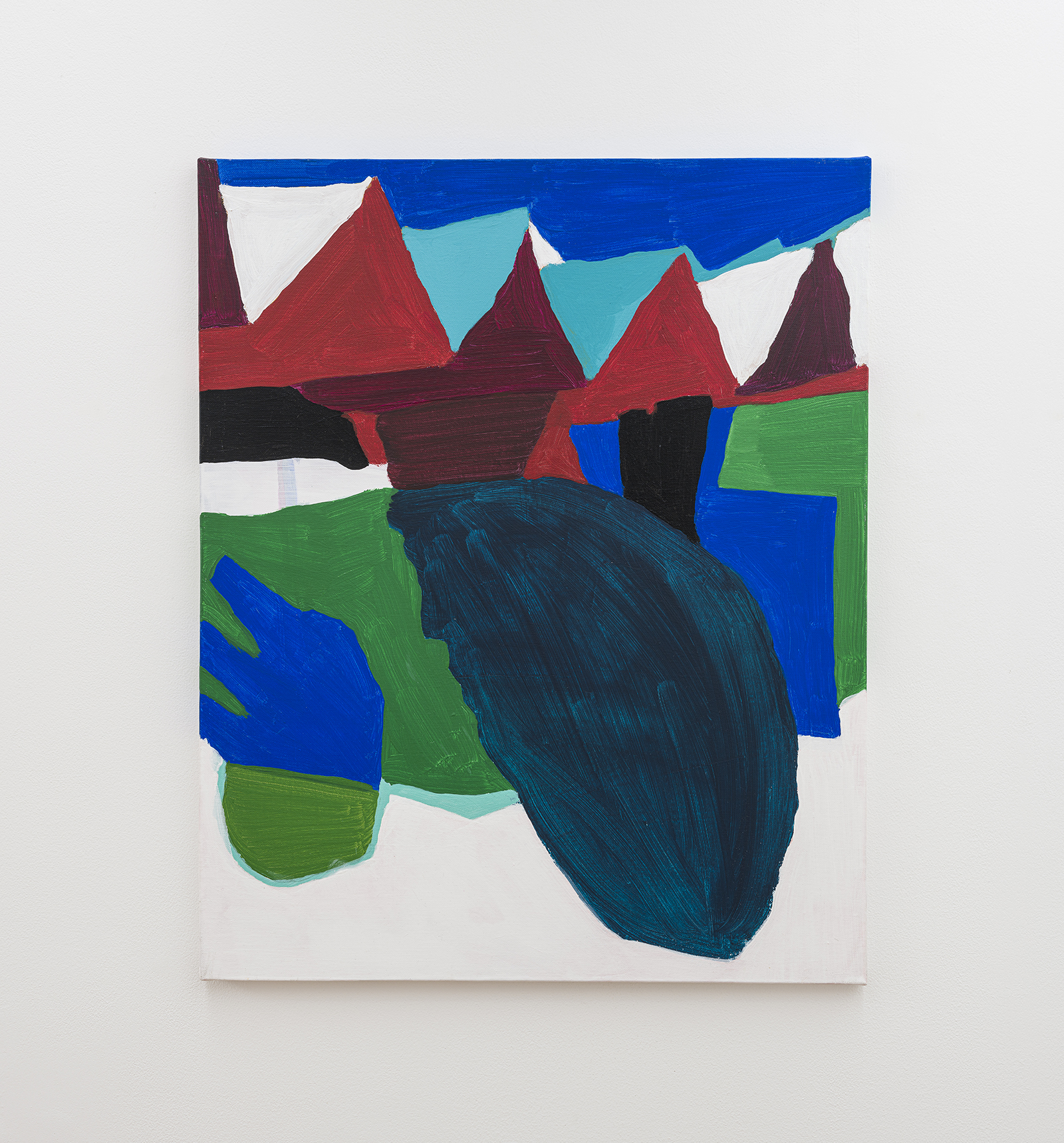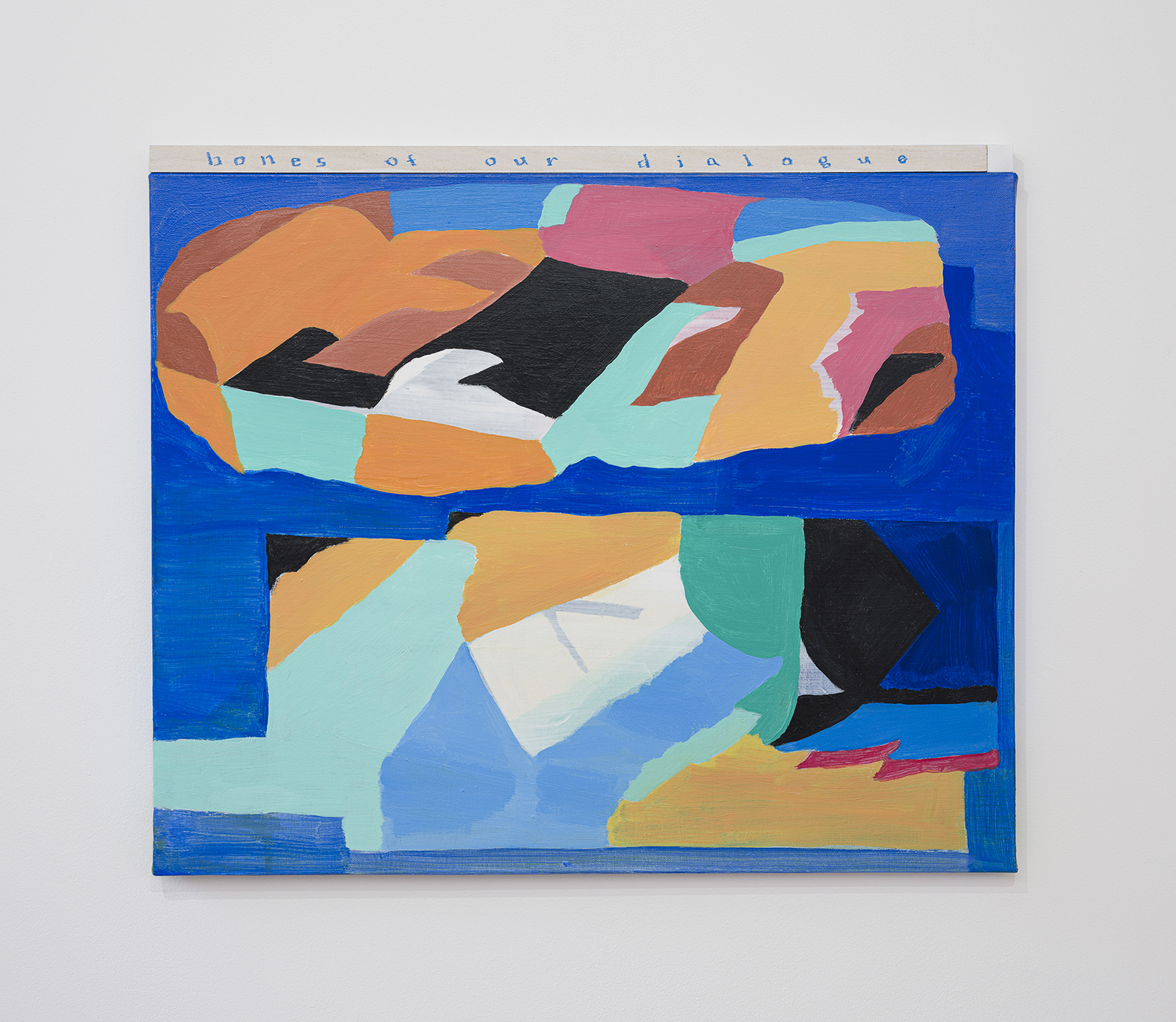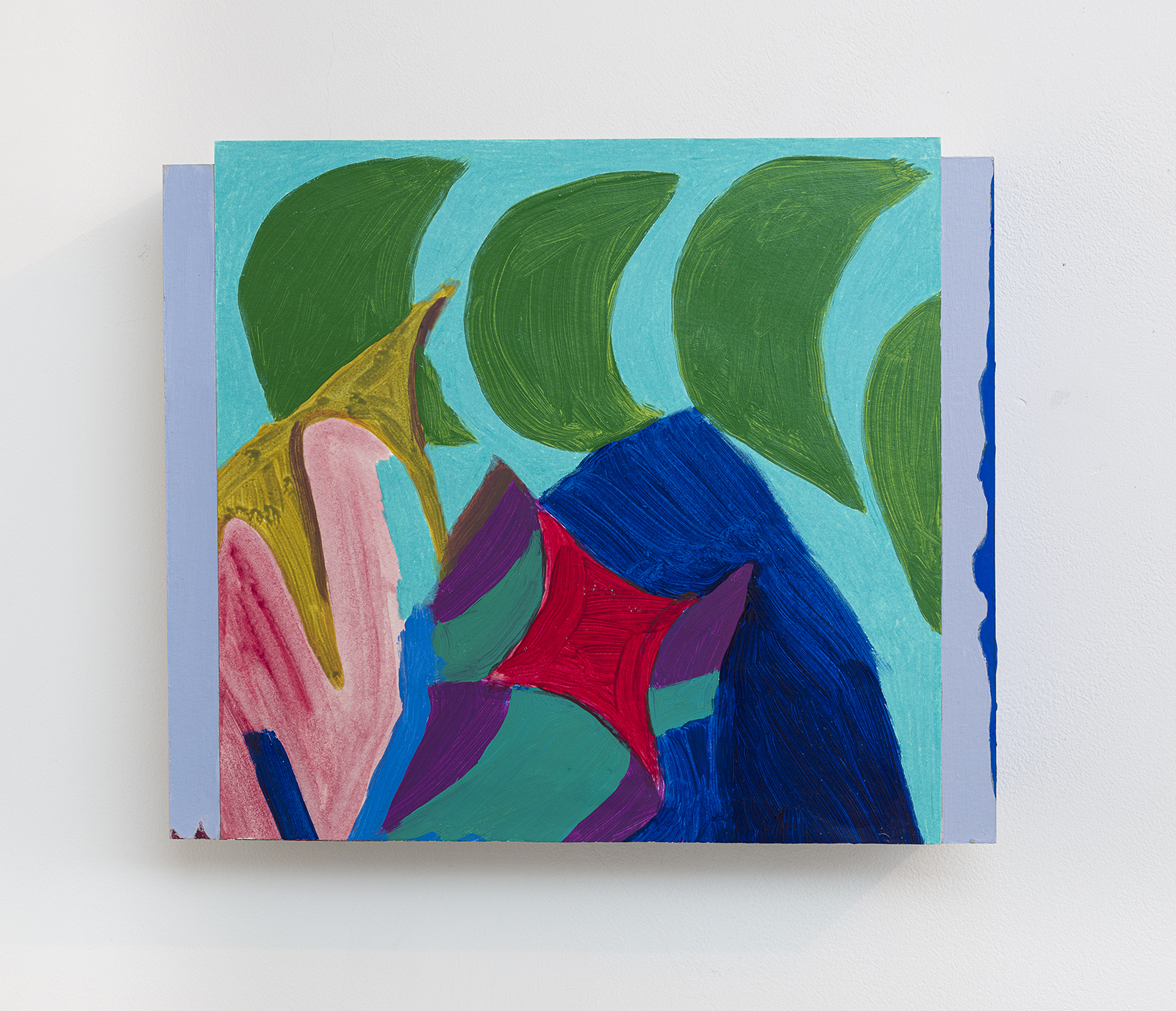Form refers to the formality of recognition or consciousness, in addition to the formative meaning of shape and configuration. Artist’s attempts to reason and break through the existing structure and present a new direction in form have continued from the past to the present. Cognizing can not be completely free from past experiences, and the embracing of the process is also fluid. 《Form/less》 speculates the transformation process, and the path of the work through observation of form revealed in the works of Hejum Bä and Sascha Pohle.
Hejum Bä approaches the traditional concept and medium of abstract painting with an alternative system of reflection. The artist combines motility, strong color relationships, and elements of language with abstract behavior in her work. In order to reveal ‘mobile image’ in painting, the artist starts by deconstructing scenes from her self-produced videos and reorganizing them as paintings, then transforming into observing motility with properties and elements within the canvas. In the painter’s solo show 《Teeth on Tail》 (2018, OCI Museum, Seoul), an abstract landscape appeared in which torn and folded colored paper moved. Rather than the substance of paper, the artist focused on the allegorical implication of how the colored surfaces can move structurally and be mobile through the confrontation of color.
In recent works in the exhibition, Bä reflected on the enigmatic elements of abstract painting comparing it to language. She associated the sounds that humans make to refer to the objects we see for the first time before learning a language with abstract reasoning. Self duplicating act of her work is evident in <Innerside Terro>, <Saga of the Unwritten>. Through this process, the artist questions if unexplicit images can correlate or partake mobility through only brushstrokes and clashes of color. After all, if the concept of abstraction is a result of a continuous thought process, the artist’s contemplation could be inferred with clues placed within the work.Sascha Pohle speculates on the process of modification and transformation of context as technology and culture migrate. His work is mostly site-specific and includes performance in composition. Recently, Pohle takes an interest in how the plants, and objects that have traveled through regions and countries, interact with the local people.
began with the artist’s project from a residency in Beijing, 2016. It contemplates the consequential after the definition of a “gift” as a story about a relationship in which human, object, plant, and visual forms intertwine due to cultural transitions. In his residency exhibition, 《Given Time》 presented bamboo craftwork, fans collected from all over china, video, and photographs, in response to the 『The Gift』(1925), Marcel Mauss‘s theory on gifts and reciprocality, and the Chinese tradition of gifting flowers at business openings. The word “after” is associated with the performance that gifts fans to the viewers. Fan acts as a transcendent concept of relation entangled with plants, wind, and gift, while bamboo baskets existed as a result of the transfer of technology and culture. The bamboo crafts installed in the exhibition refer to photographs from Karl Blossfeldt’s 『Urformen der Kunst』(1928), 『Wundergarten der Natur』(1932), which discovers patterns and structures in nature. Pohle showed Blossfeldt’s photographs to bamboo artisans in China and requested its production. These bamboo artifacts are newly installed with the latest works produced in the same way. He also set up a vibraphone and artist book with various information, including the complete source of the work, the date of the photograph’s publication, the year of its production, artisans, artists, and countries. Through his work, Pohle’s implies that cultural heritage, which appears to be academically classified, is redefined continuously under the context of each era.
Looking at exotic species that have rooted as if they were indigenous plants that surround us, one wonders what local identity means in a time of frequent migration between countries. Furthermore, how unintentionally displacing origin and genealogy through traveling and accepting mutated cultural forms will affect us in the future. The audience will look at Sascha Pohle’s work as tracking the path of relics in a museum to conceive its signification.
Form은 종류와 유형이라는 형태적 의미 외에도 특정 인식 또는 의식의 형식을 모두 일컫는다. 기존 틀을 깨고 새로운 방향의 형식을 제시하고자 하는 작가들의 사유적 시도는 과거부터 현재까지 지속되고 있다. 우리는 무엇을 인식할 때 과거의 경험으로부터 완벽히 자유로울 수 없으며 그 과정을 수용하는 방법 또한 유동적이다. 《Form/less》전은 배헤윰, 사샤 폴레의 작업에서 드러나는 형태의 관찰을 통해 작품의 변형 과정과 그 경로를 유추해 보고자 한다.
배헤윰은 추상과 회화라는 전통적인 관념과 매체에 대하여 다른 사유 체계로 접근하고자 한다. 작가는 그의 작업에서 운동성, 강렬한 색의 관계, 언어의 요소 등을 추상 행위와 결합한다. 그는 ‘운동 이미지’를 회화에 드러내기 위해 직접 제작한 영상의 장면을 해체한 후 그림으로 옮겨 재배치하는 것에서 시작하여 캔버스 내부의 물성과 요소로 움직임을 탐구하는 것으로 작업을 변모시켰다. 작가의 개인전 《꼬리를 삼키는 뱀》(2018, OCI미술관, 서울) 에서는 색종이가 찢기고 접힌듯한 형태가 이동하는 추상적인 풍경이 등장했다. 작가는 종이가 가진 실체보다 ‘회화에서 색면은 어떻게 구별되며 그것의 구조적 움직임은 어떻게 발생하는가’를 암시하는 것에 집중했다.
작가는 본 전시의 최근작에서 이해하기 어려운 추상회화의 요소들을 언어에 빗대어 고민했다. 그는 인간이 언어를 배우기 전에 처음 보는 사물을 지칭하기 위해 내는 소리를 추상적 사유와 연관 지었다. <이면의 테로>, <글 모르기 모험>에서는 그의 작품을 스스로 복기하는 행위도 확인할 수 있다. 작가는 이 방식을 통해 캔버스에서 알 수 없는 이미지가 서로 관계를 갖고 색의 충돌과 붓자국만으로 운동성을 띠는지 질문하고 있다. 만약 추상이 끝없는 사고 작용 중에 나오는 내용이라면, 작가의 작업에 놓인 여러 단서를 가지고 그의 생각을 역을 추론해 볼 수 있을 것이다.
사샤 폴레는 기술과 문화가 이주하면서 맥락이 수정, 변형되는 과정을 추측한다. 그의 작업은 대체로 장소특정적이며 퍼포먼스가 포함된 구성을 보인다. 최근에 작가는 국가 및 지역을 이동한 식물과 사물이 현지의 사람들과 어떻게 상호작용을 하고 있는지에 흥미를 두고 있다.
<After The Gift>는 작가가 2016년 베이징의 레지던시에서 진행했던 프로젝트에서 시작되었다. ‘선물’이라는 정의 그 이후의 세계에 관한 상념으로 인간, 사물, 식물, 시각적 형태가 문화적 전이로 인해 서로 얽히는 관계에 대한 이야기다. 당시 레지던시에서 열린 전시 《Given Time》에는 마르셀 모스의 선물과 호혜성에 관한 이론 『The Gift』(1925), 중국에서 개업할 때 꽃을 선물하는 전통에 대하여, 대나무 공예품, 중국 전역에서 수집한 부채, 사진, 영상 작품이 나열되어 있었다. “After”라는 단어는 관람객에게 부채를 선물하는 퍼포먼스와 연관이 있다. 부채는 식물, 바람, 선물로 얽힌 관계의 초월적 개념으로 작용하고, 대나무 바구니는 기술과 문화가 이전한 결과로 존재했다. 전시에 설치된 대나무 공예품은 자연 속에서 패턴과 구조를 발견한 칼 블로스펠트의 사진집 『Urformen der Kunst』(1928), 『Wundergarten der Natur』(1932)에 있는 사진을 참조한 것이다. 작가는 블로스펠트의 사진을 중국에 거주하는 대나무 공예 장인들에게 보여주고 제작을 부탁했다. 이 대나무 공예품들은 동일한 방식으로 제작한 최근의 작품과 함께 새롭게 설치되었다. 또한 그는 제작연도, 공예가, 예술가, 국가, 식물의 이름 등 작품의 상세한 근원이 적힌 비브라폰과 아티스트북을 같이 놓아두었다. 작가는 작품을 통해 학술적으로 분류된 것으로 보이는 문화적 유산이 실제로는 끊임없이 각 시대에 맥락 아래 재정의되고 있음을 은유하고 있다.
언젠가부터 우리 주변에서 토착 식물이었던 것처럼 뿌리를 내리고 서있는 외래종들을 바라보고 있으면, 국가간의 이주가 빈번한 시대의 지역 정체성이란 어떤 의미가 있는지, 의도치 않게 자리를 옮겨 기원과 계보를 잃거나 변종 된 문화 형태를 받아들이는 것이 앞으로 우리에게 어떤 영향을 줄지 고민해보게 된다. 관객은 사샤 폴레의 작품을 마치 박물관 유물의 궤적을 추적하듯이 살피며 작품의 의미를 상상해보게 될 것이다.
